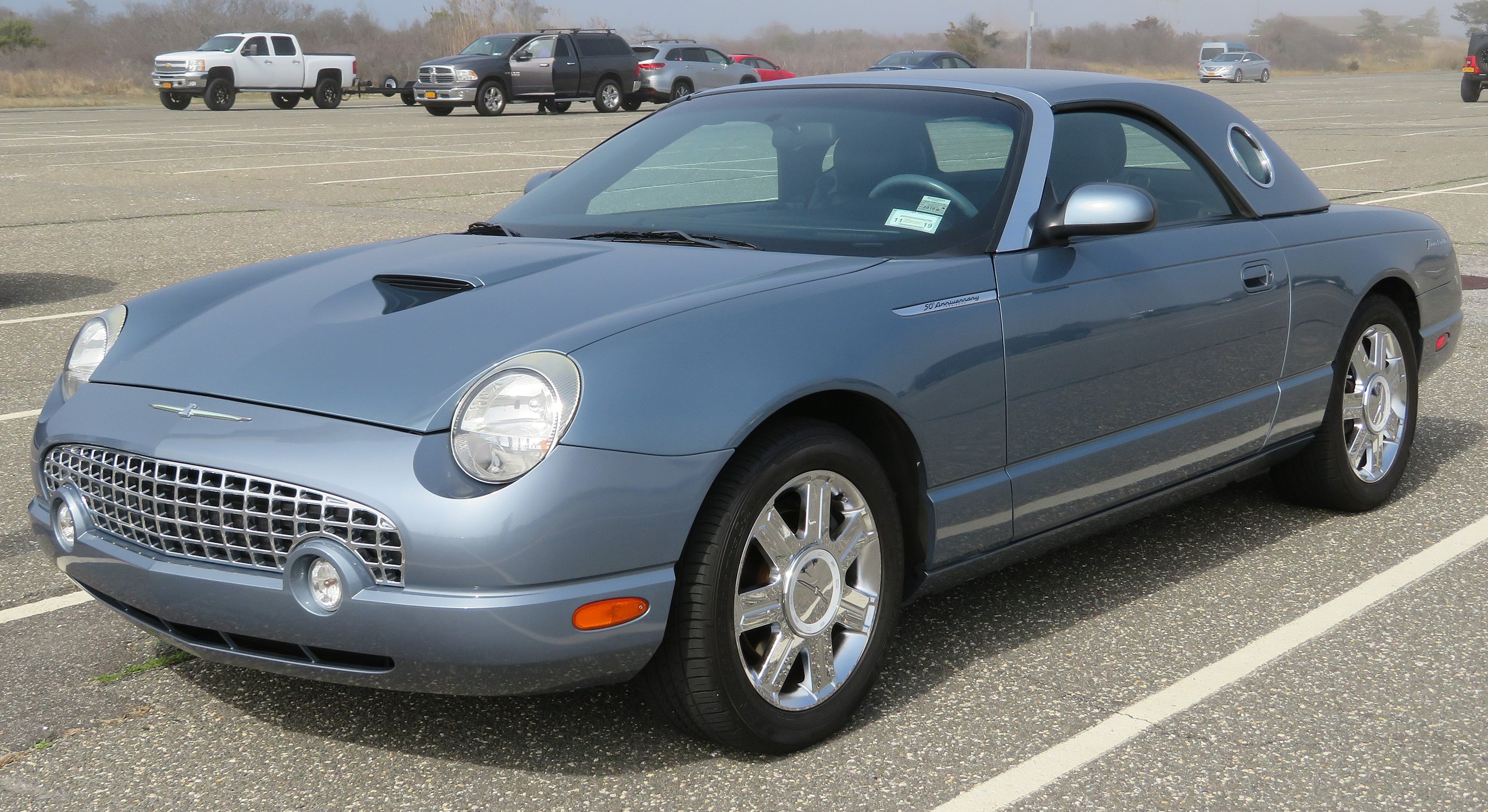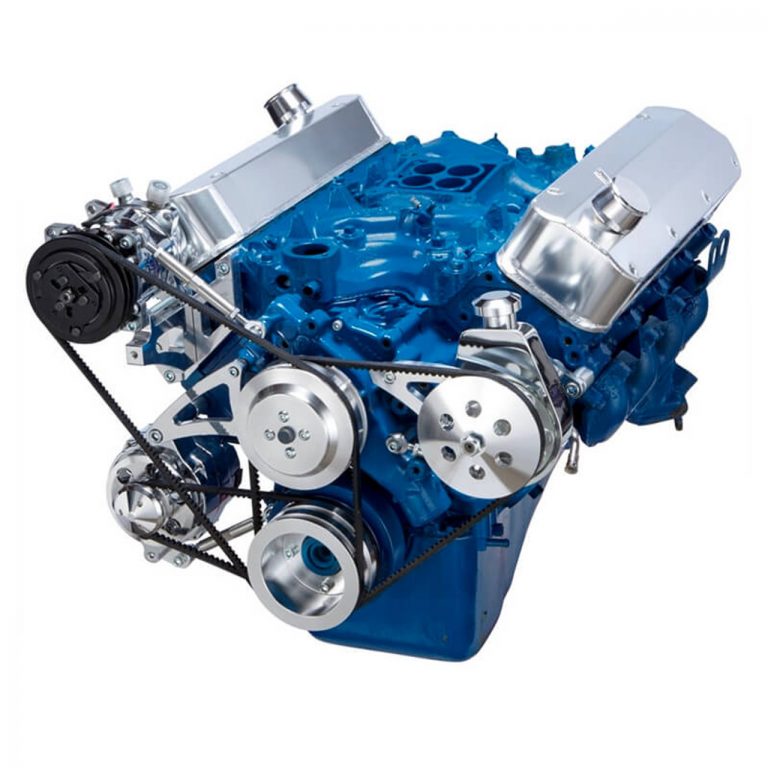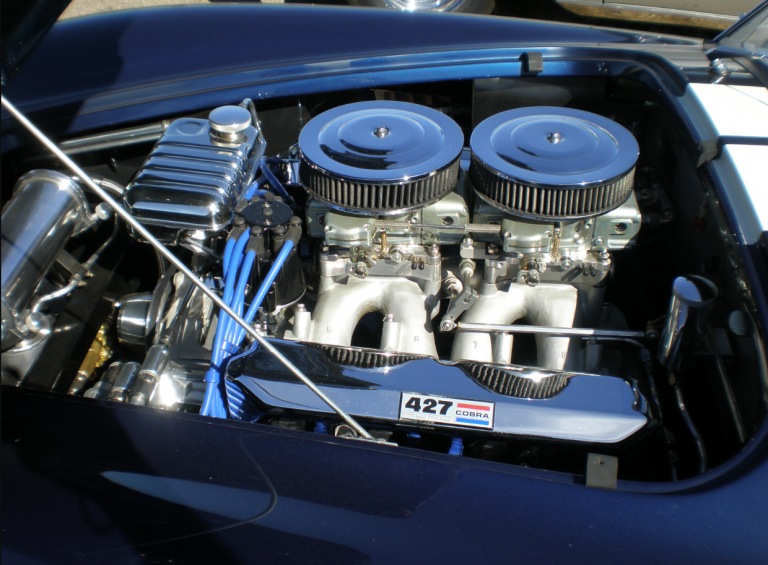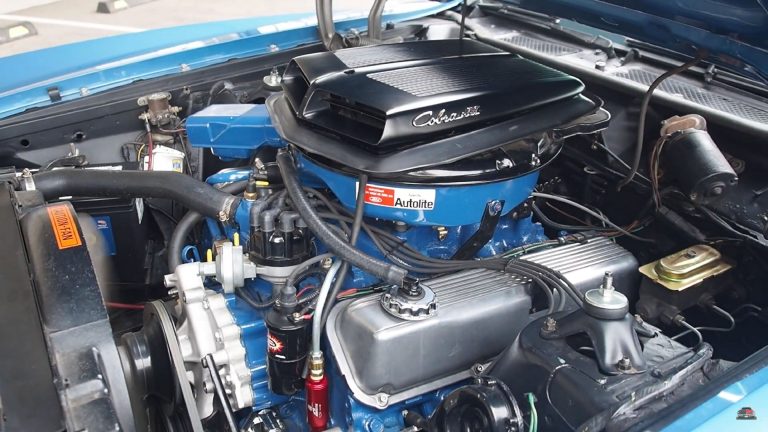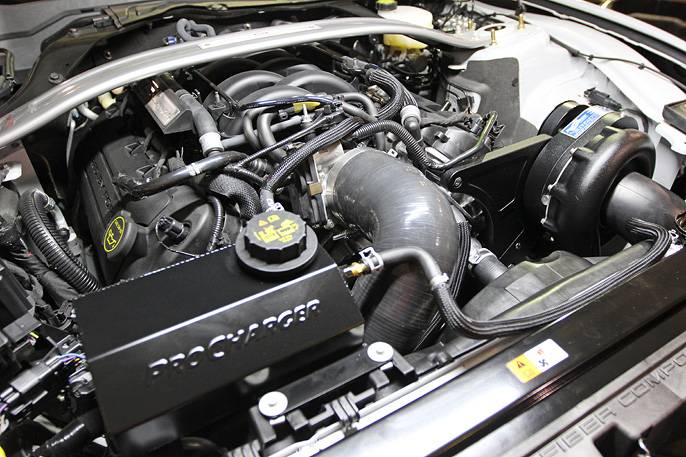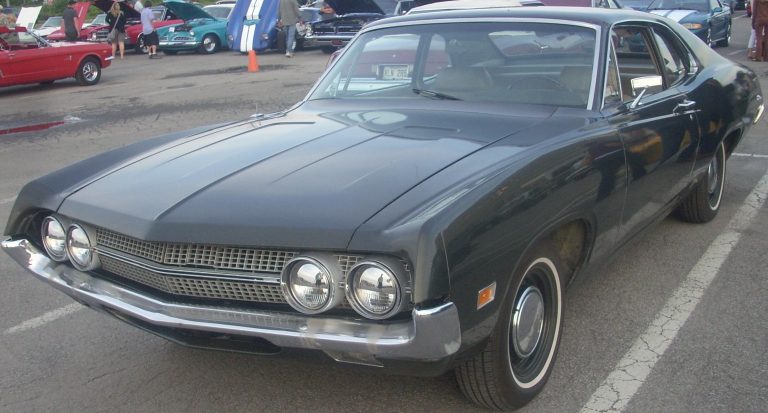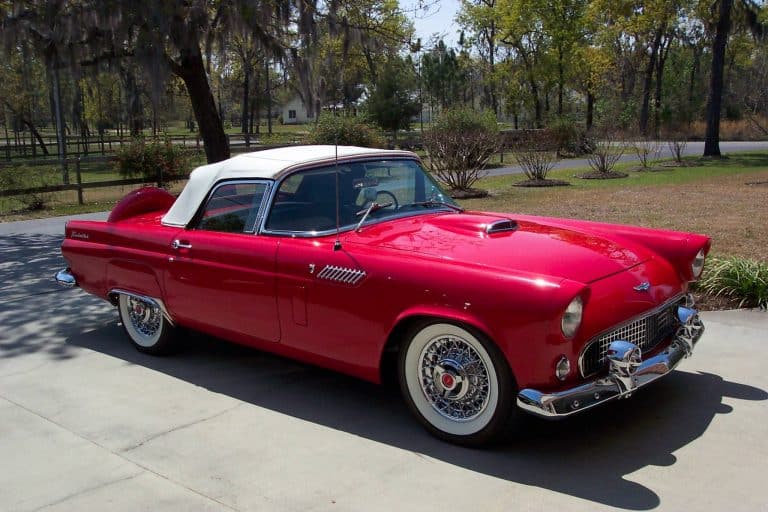Ford Thunderbird, 1977-2005

Meet Chandler
Chandler has a bachelors and masters degree in history as well as a passion for classics and muscle cars. His education and historical knowledge makes him skilled at crafting highly detailed articles about America’s muscle cars and automotive history. His love of muscle cars is undeniable, with him seeking them out at every opportunity during his visits to auto shows and car meets. Chandler’s knowledge and enthusiasm towards automotive history make him a great asset to the Muscle Car Club community.
Spanning 50 years, the Ford Thunderbird is one of the most iconic cars in American history. First introduced for the 1955 model year, Ford marketed the Thunderbird as a personal luxury car that featured outstanding performance from big-block V8s. The original run of the Thunderbird lasted for 10 generations from the 1955–1997 model years, before Ford briefly halted production. It did make one last comeback from 2002–2005 for an 11th generation, but Ford has since retired the moniker again.
In the late-1970s, the Thunderbird reached unprecedented levels of sales, eclipsing ¼ of a million cars annually for three years, but things soon dropped back down to normal levels. In the 1980s, Ford ditched carburetors for fuel injection, and introduced the first forced induction Thunderbird since the 1950s, a turbocharged I4 making 145–190 horsepower. From 1989–1995, Ford put out a high performance Thunderbird Super Coupe model. The Thunderbird SC used a supercharged 3.8L V6 that made 210–230 horsepower and 315-330 lb-ft of torque.
This article will cover the final 7–11th generations of the Ford Thunderbird, spanning the years 1977–2005. To learn about the 1955–1976 Ford Thunderbird, check out our other article here.
Ford Thunderbird, 1977–2005: Overview
The seventh generation of the Ford Thunderbird lasted from 1977–1979, and for the first time the car downsized. However, production skyrocketed six-fold over the previous generation in the first year, and stayed strong through the end of the decade. Ford used 302, 351, and 400 cid V8 engines, but power output stalled at a maximum of 173 horsepower in 1977, which dropped to 152 horsepower by 1979.
The eighth generation of the Ford Thunderbird began in 1980 and ended in 1982. Production fell back to previous levels, and performance was still nothing to write home about. This was the first generation of the Fox Body design, as the Thunderbird got smaller once again. Ford produced the ninth generation Thunderbird from 1983–1988, which included the popular Thunderbird Turbo Coupe featuring a 2.3L turbocharged I4 engine making 145–190 horsepower.
Ford’s 10th generation Thunderbird lasted from 1989–1997, and was the last before its brief hiatus. This included the Thunderbird Super Coupe until 1995, which used a supercharged 3.8L V6 engine rated at 210–230 horsepower, making it the most powerful Thunderbird since 1971.
After a brief hiatus, Ford produced the 11th and final generation of the Thunderbird from 2002–2005. This time, Ford used a 3.9L V8 making 252–280 horsepower, which they helped create with Jaguar during their brief ownership of the company.
Sales were relatively poor and Ford discontinued the Thunderbird after just a few years and it has not been revived since. Recent news indicates Ford may be bringing the Thunderbird moniker for a comeback, but only time will tell.
Seventh Generation Ford Thunderbird
The seventh generation of the Ford Thunderbird lasted from 1977–1979, and marked a significant change for the Thunderbird. Since 1955, Ford had marketed the Thunderbird as a full-size luxury car with high performance engines, but that had firmly changed by 1977. Ford made the entire car smaller and also cut nearly 1,000 pounds in weight, shifting it into the intermediate-size market and the new Fox Body frame. It continued to use a body-on-frame chassis, and it was basically a smaller LTD II.
For the 1977 Thunderbird, Ford chopped $2,700 off the price, but also reduced the number of standard options. They designed the headlights to be concealed behind retractable covers, added a new grille, and included a Thunderbird nameplate on the rear deck. Like before, only a two-door hardtop body style was available.
Model-wise, there was either a base or a Town Landau, and Ford also offered a Silver/Lipstick Feature Package, too. The Town Landau was a luxury version of the T-Bird, using a V8 engine, fully loaded interior, 24-karat gold-finished owner nameplate, and special exterior. While the Silver/Lipstick package was essentially a paint and vinyl trim package.
For the 1978 Thunderbird, Ford added a limited edition Diamond Jubilee Thunderbird as part of the celebration of Ford’s 75th anniversary. The DJ Thunderbird featured diamond blue metallic or ember metallic paint, a special interior, a super sound package, and a 22-karat gold-finished owner’s nameplate. Ford sold roughly 19,000 DJ Thunderbirds. For the 1979 Thunderbird, Ford redesigned the front and rear ends, and also brought out the Heritage Edition to replace the Diamond Jubilee model.
1977–1979 Ford T-Bird Ford T-Bird Engine Technical Specifications
| Model Years | Engine | Horsepower | Torque |
| 1977 | 302 cid V8 (2bbl) | 130-137 horsepower | 248 lb-ft |
| 1977 | 351 cid V8 (2bbl) | 149-161 horsepower | 275-285 lb-ft |
| 1977 | 400 cid V8 (2bbl) | 173 horsepower | 326 lb-ft |
| 1978-1979 | 302 cid V8 (2bbl) | 134 horsepower | 248 lb-ft |
| 1978-1979 | 351 cid V8 (4bbl) | 152 horsepower | 278 lb-ft |
| 1978 | 400 cid V8 (2bbl) | 166 horsepower | 319 lb-ft |
| 1979 | 351 cid V8 (2bbl) | 135-142 horsepower | 286 lb-ft |
Seventh Generation Engines, Transmission Options, and Performance
For the seventh generation of the Thunderbird, Ford ditched the 460 cid V8 from years prior and used three smaller V8s. These were 302, 351, and 400 cid V8s, all of which had double-barrel carbs. Power output was nothing special, and the best was the 173 horsepower 400 V8. Both the 302 and 351 cid V8s were from the small-block Windsor V8 family, while the 400 was from the 335/Cleveland V8 family. The 400 cid was actually a 402 cid, but Ford marketed it as a 400.
Ford continued to use these same three engines for the entire generation, though power changed pretty much every year. Only the 400 V8 really inspired anything, and even that was pretty pathetic when compared to years prior. The 1970s car malaise seriously hurt the Thunderbird, and it could barely be considered sporty at this point. When the second oil crisis of the decade hit in 1979, sales started to fall as the engines were far less desirable than years prior. Transmission wise, owners only had a three-speed manual as an option, which was fitting for the cars they were in.
Seventh Generation Ford T-Bird Production Numbers
| Model Year | Production Plant | Production Total |
| 1977 | Los Angeles, CA | 82,256 |
| Chicago, IL | 235,884 | |
| 1977 Total | 318,140 | |
| 1978 | Los Angeles, CA | 91,959 |
| Chicago, IL | 260,792 | |
| 1978 Total | 352,751 | |
| 1979 | Los Angeles, CA | 75,893 |
| Chicago, IL | 208,248 | |
| 1979 Total | 284,141 |
Eighth Generation Ford Thunderbird
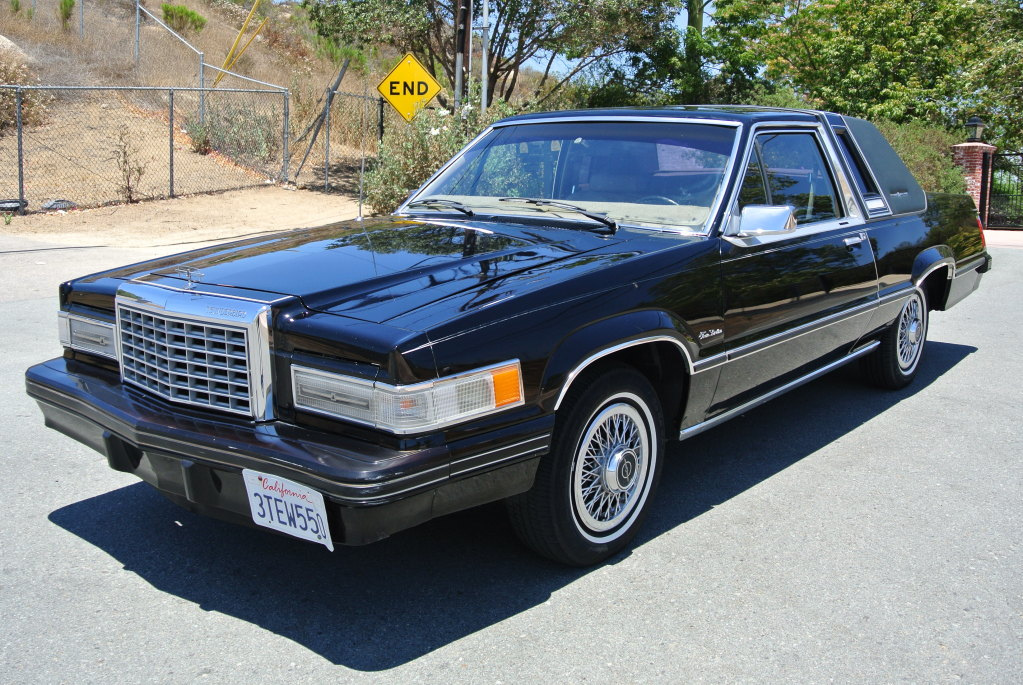
The eighth generation of the Ford Thunderbird lasted from 1980–1982, and they are known as the “Silver Birds.” 1980 was the 25th anniversary of the Thunderbird, and Ford gave it another redesign. Once again, the Thunderbird got smaller and lighter, using the same platform as the Cougar XR-7 from Ford’s Mercury division. This meant going back to a unibody frame, though it still resided on the larger Fox Body platform. Its main competition now were the Dodge Charger and the Pontiac Grand Prix.
For 1980, Ford made a Silver Anniversary model available, which had a special vinyl roof and velour interior. For the most part, the Thunderbird stayed the same appearance-wise during the eighth generation, though the grille did undergo slight changes each year. Production was down severely from the Thunderbird’s peak a few years prior, a reflection of the lack of performance and thrill from the new neutered T-Birds.
1980–1982 Ford T-Bird Engine Technical Specifications
| Model Years | Engine | Horsepower | Torque |
| 1980-1982 | 4.2L V8 (2bbl) | 115 horsepower | 194 lb-ft |
| 1980-1981 | 5.0L V8 (2bbl) | 131 horsepower | 231 lb-ft |
| 1981-1982 | 3.3L I6 (1bbl) | 88 horsepower | 154 lb-ft |
| 1982 | 3.8L V6 (2bbl) | 112 horsepower | 175 lb-ft |
Eighth Generation Engines, Transmission Options, and Performance
For the eighth generation Thunderbird, Ford kept the 302 cid V8, now branded as a 5.0 liter, and introduced a few new engines. For the 1980 Ford Thunderbird, a 4.2L V8 making 115 horsepower appeared, and the following year an economy 3.3L I6 – the first six-cylinder in Thunderbird history – appeared making just 88 horsepower. For 1982, Ford dropped the 5.0 V8, instead adding a smaller 3.8L V6 at just 112 horsepower.
The 4.2L was essentially just a de-bored version of the small-block Windsor 302 cid/5.0L, and was created to improve emissions, leading to the discontinuation of the 302 for 1982. The 3.3L I6 was part of the third generation of Ford’s straight-six line, and only appeared for two years. The larger 3.8L V6 was part of Ford’s Essex line of V6 engines, and used a double-barrel carburetor.
None of these engines inspired anything for performance, and were largely created and put in the Thunderbird to meet rising emissions standards. Transmission wise, owners only had a three-speed manual as an option, which was fitting for the cars they were in.
The cars reflected the changing American automobile consumer market, which was shifting towards smaller engines with better fuel economy. After all, the big displacement V8s were making barely 150 horsepower on a good day, and you could get similar performance from something half the size. The oil crises also turned many Americans off of cars and towards public transportation.
Eighth Generation Ford T-Bird Production Numbers
| Model Year | Production Plant | Production Total |
| 1980 | Lorain, OH | 63,169 |
| Chicago, IL | 93,634 | |
| 1980 Total | 156,803 | |
| 1981 | Lorain, OH | 86,693 |
| 1981 Total | 86,693 | |
| 1982 | Lorain, OH | 45,142 |
| 1982 Total | 45,142 |
Ninth Generation Ford Thunderbird
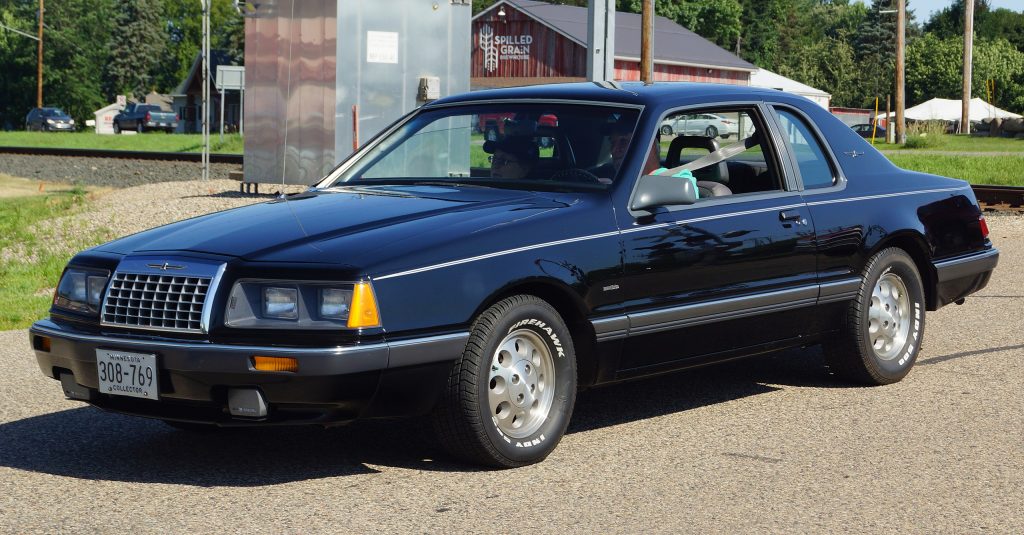
Ford’s ninth generation Thunderbird lasted from 1983–1988, and at first they were known as the “Aero Birds.” This was (predictably) due to their new aero-based appearance, which included a smaller overall Thunderbird, continuing the trend from years past. However, this made the backseats more cramped for passengers, and the entire roofline was also lower.
Ford still based the Thunderbird on the Fox Body platform, but it got a pretty big redesign. The square edges were much more rounded, and the headlights were visible and not hidden. A new egg crate grille was front and center, and the windshield was raked back to make the car look a bit more sporty.
For the 1983 Ford Thunderbird, there were three models available, the base, the Heritage, and a brand new Turbo Coupe. The turbo had a front air dam and fog lamps, as well as new wheels, performance tires, side moldings, and hood scoops starting in 1987. Interestingly, the V6 actually won out over the turbo coupe in terms of handling, but neither won Car of the Year, though they were top 5.
The 1984 Ford Thunderbirds got a new grille with a T-Bird badge, new headlights, parking lights, and the Heritage became the Elan. There was also a FILA model, made in partnership with FILA sports, an Italian sports company. For 1985, Ford put out a special 30th Anniversary model and added a digital speedometer. The FILA disappeared in 1986, and the Elan returned from a one year hiatus.
The 1987–1988 Ford T-Birds are known as “Bubble Birds,” due to their new styling. It was somewhat subtle, but included new front and rear ends, new sheet metal, and a more aerodynamic look.
1983–1988 Ford T-Bird Engine Technical Specifications
| Model Years | Engine | Horsepower | Torque |
| 1983-1984 | 2.3L I4 (Turbo) | 145 horsepower | 172 lb-ft |
| 1983 | 3.8L V6 (2bbl) | 114 horsepower | 175 lb-ft |
| 1983 | 5.0L V8 (EFI) | 130 horsepower | 240 lb-ft |
| 1984-1987 | 3.8L V6 (EFI) | 120 horsepower | 205 lb-ft |
| 1984-1985 | 5.0L V8 (EFI) | 140 horsepower | 250 lb-ft |
| 1985-1986 | 2.3L I4 (Turbo) | 155 horsepower | 190 lb-ft |
| 1986-1987 | 5.0L V8 (EFI) | 150 horsepower | 270 lb-ft |
| 1987-1988 | 2.3L I4 (Turbo) | 190 horsepower | 240 lb-ft |
| 1988 | 3.8L V6 (EFI) | 140 horsepower | 215 lb-ft |
| 1988 | 5.0L V8 (EFI) | 155 horsepower | 265 lb-ft |
Ninth Generation Engines, Transmission Options, and Performance
The big story for the ninth generation Ford Thunderbird was the emergence of electronic fuel injection (EFI). For 1983, the only carbureted engine was the 3.8L V6 using a double-barrel, but Ford dropped it for 1984 and on. New engines included a 5.0L V8 with EFI and a turbocharged 2.3L I4, also with EFI. The turbo was a Garret T03 made the most at 145 horsepower and 172 lb-ft of torque. Originally, Ford gave the Turbo Coupe only a five-speed manual, but added an automatic in 1984.
For the 1985 Ford Thunderbird, the 2.3L turbo got higher flowing injectors and electronic boost control, which bumped power up to 155 horsepower. That year, Ford also gave the turbo coupe a new five-speed, and the automatic was made to accommodate the high rpm redline. In 1987, Ford added an air-to-air intercooler, which helped the engine reach 190 horsepower.
That year, Ford’s Special Vehicle Operations (SVO) branch worked on the turbo coupe, and they swapped out the Garrett for an IHI that reduced lag and improved low-end and mid-range performance. They also added higher flowing intake and exhaust manifolds and added dual-exit mufflers.
For 1984, Ford had introduced an EFI version of the 3.8L V6, which had single-point fuel injection. In 1987, this was upgraded to multipoint and sequential fuel injection, which also increased horsepower by 20. This was similar to the 5.0 V8, which used throttle body injection from 1983–1986, after which it changed to sequential fuel injection.
Ninth Generation Ford T-Bird Production Numbers
| Model Year | Production Plant | Production Total |
| 1983 | Lorain, OH | 76,005 |
| Atlanta, GA | 45,994 | |
| 1983 Total | 121,999 | |
| 1984 | Lorain, OH | 136,301 |
| Atlanta, GA | 34,250 | |
| 1984 Total | 170,551 | |
| 1985 | Lorain, OH | 131,215 |
| Atlanta, GA | 20,637 | |
| 1985 Total | 151,852 | |
| 1986 | Lorain, OH | 163,965 |
| 1986 Total | 163,965 | |
| 1987 | Lorain, OH | 128,135 |
| 1987 Total | 128,135 | |
| 1988 | Lorain, OH | 147,243 |
| 1988 Total | 147,243 |
10th Generation Ford Thunderbird
The penultimate generation of the Ford T-Bird lasted from 1989–1997, and are known as the “Super Birds.” For the first time in years, the Thunderbird actually got longer, and in 1989 the T-Bird won the Motor Trend Car of the Year award. The car was lower than before, the hood flatter, and it still had a stylish and aero appearance. This was due to the new MN12 platform it resided on. The T-Bird mostly stayed the same until 1994, when it got a new front end with a refresh.
From 1989–1995, Ford brought out the Thunderbird Super Coupe, or SC, which featured a supercharged 3.8L V6 engine. This was the first true performance Thunderbird in decades, notwithstanding the Turbo Coupe from the generation prior, which could not even crack 200 horsepower. Many people had expected the Thunderbird to be front-wheel drive, like some of its competitors, but Ford kept it rear-wheel drive.
In 1997, Ford manufactured the last Thunderbird of the 10th generation, after which Ford killed the car off for five years. Sales were decent, but slumping compared to what they had been, but Ford no longer felt the Thunderbird to be a viable option.
1989–1997 Ford T-Bird Engine Technical Specifications
| Model Years | Engine | Horsepower | Torque |
| 1989-1995 | 3.8L V6 | 140 horsepower | 215 lb-ft |
| 1989-1993 | 3.8L V6 (Supercharged) | 210 horsepower | 315 lb-ft |
| 1991-1993 | 5.0L V8 | 200 horsepower | 275 lb-ft |
| 1994-1995 | 3.8L V6 (Supercharged) | 230 horsepower | 330 lb-ft |
| 1994-1996 | 4.6L V8 | 205 horsepower | 265 lb-ft |
| 1996-1997 | 3.8L V6 | 145 horsepower | 215 lb-ft |
| 1997 | 4.6L V8 | 205 horsepower | 280 lb-ft |
10th Generation Engines, Transmission Options, and Performance
For the 10th generation T-Bird, Ford kept the 3.8L V6, but dropped both the turbo I4 and the 5.0 V8. In their place, Ford brought out a supercharged version of the 3.8 V6, which was designed by the Special Vehicle Engineering (SVE) branch and made 210 horsepower and 315 lb-ft of torque.
The blower was an Eaton M90 roots-style that made 12 PSI of boost, and the system included an intercooler. Compared with the naturally aspirated 3.8 V6, the boosted version had a new block, heads, camshaft, crankshaft, pistons, and a slightly lower 8.2:1 compression ratio to accommodate the boost.
In the 1994 Ford Thunderbird Super Coupe power bumped up to 230 horsepower, due to a new supercharger, larger injectors, and an increased 8.6:1 compression ratio. The new engine only lasted two years, as Ford dropped the Super Coupe in 1996.
Also for the 1994 Thunderbird, Ford dropped the Windsor 5.0 V8 and swapped in the modular 4.6 V8. This was the two-valve version of the engine, and was the same used in the late-1990s and early-2000s Mustang GT/Bullitt. Originally, it made 205 horsepower and 265 lb-ft of torque, but torque jumped to 280 lb-ft in 1996 when Ford gave it a new engine control module.
10th Generation Ford T-Bird Production Numbers
| Model Year | Model | Production Total |
| 1989 | Thunderbird (Global) | 114,868 |
| 1989 Total | 114,868 | |
| 1990 | Coupe | 90,247 |
| Super Coupe | 20,339 | |
| 35th Anniversary | 3,371 | |
| 1990 Total | 113,957 | |
| 1991 | Thunderbird | 75,706 |
| Super Coupe | 7,267 | |
| 1991 Total | 82,973 | |
| 1992 | Thunderbird | 73,175 |
| Super Coupe | 4,614 | |
| 1992 Total | 77,789 | |
| 1993 | LX/Super Coupe | 122,415 |
| 1993 Total | 122,415 | |
| 1994 | Thunderbird | 130,713 |
| 1994 Total | 130,713 | |
| 1995 | Thunderbird | 114,823 |
| 1995 Total | 114,823 | |
| 1996 | Thunderbird | 85,029 |
| 1996 Total | 85,029 | |
| 1997 | Thunderbird | 73,814 |
| 1997 Total | 73,814 |
11th Generation Ford Thunderbird
After being gone for four model years, Ford brought the Thunderbird back in 2002 for a final 11th generation. The last Thunderbird only lasted four years until 2005, and it did not sell particularly well. When Ford brought it back, the new T-Bird looked completely different than the outgoing 10th generation. It was almost like a hybrid between the first generation (1955-1957) T-Bird and the 10th generation, featuring cues from both.
Harkening back to the ‘50s T-Birds, the 11th generation Thunderbird was a two-seater roadster. It had a prominent center hood scoop, bulging single headlights, a widemouth grille with fog lights, and had a removable fiberglass top to make it a convertible. It resided on the Ford DEW platform, which was developed in conjunction with Jaguar during Ford’s brief ownership of the company. They also used it on the Jaguar S-Type and XF 250 and Lincoln LS. The initial 2002 Ford Thunderbird won the Motor Trend Car of the Year award.
At one point, in 2003, Ford introduced a concept version of a supercharged Thunderbird model, but it was never put into production and later auctioned off. Sales were poor for the 11th generation Thunderbird, and they declined annually from a peak of 31,000 in 2002. From the beginning, Ford had planned on limiting the model to just a few years to make them “more collectible,” and they ended the 11th generation in 2005 after just four model years.
2002–2005 Ford T-Bird Engine Technical Specifications
| Model Years | Engine | Horsepower | Torque |
| 2002 | 3.9L V8 (AJ30) | 252 horsepower | 267 lb-ft |
| 2003-2005 | 3.9L V8 (AJ35) | 280 horsepower | 286 lb-ft |
11th Generation Engines, Transmission Options, and Performance
For the 2002–2005 Ford Thunderbird, Ford used two versions of the Ford-Jaguar AJ-V8 engine. They were the AJ30 in 2002 and the AJ35 from 2003–2005. The AJ30 produced 252 horsepower and 267 lb-ft, while the AJ35 bumped those up to 280 horsepower and 286 lb-ft of torque. Other changes for 2003 included the addition of intake-side variable valve timing, a higher compression ratio (10.8:1 vs 10.6:1), and electronic throttle control.
On the track, the AJ35-powered Thunderbird could go from zero to 60 mph in 6.5 seconds (via Car and Driver), hit the ¼ mile in 15.0 seconds @ 96 mph, and had a top speed of 132 mph. It averaged 17 mpg, and only was available with a five-speed automatic transmission. In 2004, Ford gave customers the option of a SelectShift automatic, so they could shift the gears themselves.
11th Generation Ford T-Bird Production Numbers
| Model Year | Model | Production Total |
| 2002 | Thunderbird | 31,368 |
| 2003 | Thunderbird | 14,678 |
| 2004 | Thunderbird | 12,757 |
| 2005 | Thunderbird | 9,295 |
Ford Thunderbird, 1977–2005: Legacy
The Ford Thunderbird from 1977–2005 started off immensely popular, but quickly gave way to average sales and enthusiasm. By the 1980s, the car was no longer the full-size luxury car with sporty performance it had been, and was now an intermediate-size luxury vehicle with only middling performance.
From 1983–1988, Ford brought back some of the sportiness with the turbo coupe and a turbocharged I4 engine making 145–190 horsepower. Then, from 1989–1995, Ford produced the Thunderbird Super Coupe, which featured a 210–230 horsepower supercharged V6 engine and had torque on-demand. Unfortunately, neither were able to save the Thunderbird from the grave, and Ford ended it after 10 generations in 1997.
Briefly, from 2002–2005, Ford brought back the Thunderbird for a final 11th generation, but it never really got off the ground. Sourcing its engine from a Ford-Jaguar collaboration, it made decent power but had somewhat polarizing looks. In the end, Ford finally terminated the Thunderbird in 2005, and it has not seen a revival since.
For information on the early Thunderbird, check out our other T-Bird article.
*Thanks to John Gunnell and James T. Lenzke’s “T-Bird: 45 Years of Thunder,” for production numbers, engine figures, and other information.
**Thanks to John Gunnell’s “Standard Catalog of Ford, 1903–2003,” for production numbers, engine figures, and other information.

